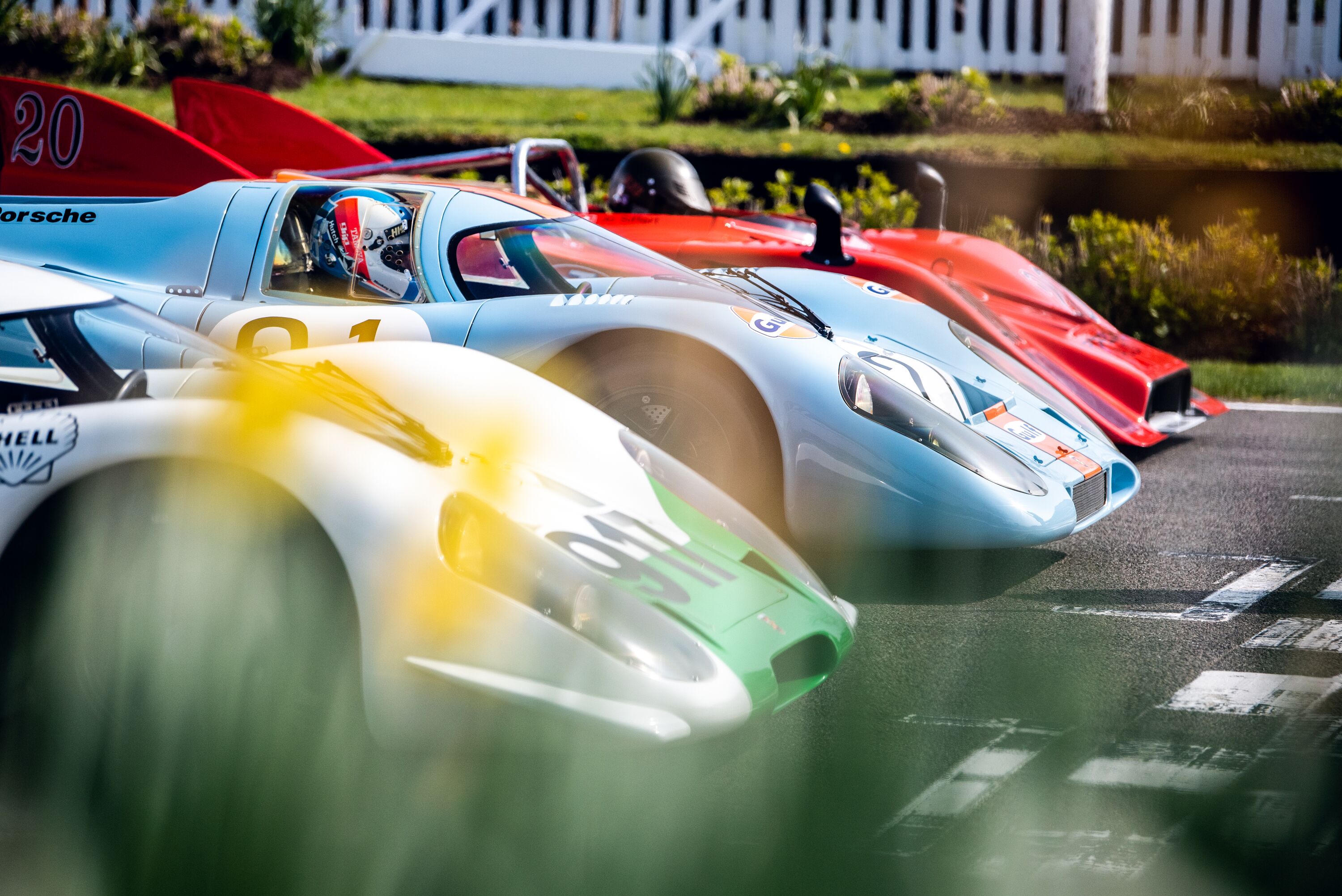The eight best Mercedes road cars
Now here’s a challenge, trying to create a snapshot of the long and storied history of Mercedes-Benz without resorting to a multiple part series or a Wagnerian length saga. It is very nearly 120 years since the first car to be called a Mercedes first turned a wheel. It’s fair to say that since then the company has not only had some stalwart nameplates which lasted decades but also a pretty diverse and fascinating portfolio. We did decide to exclude AMG models to at least begin to narrow our choices down but we know that there are still a few glaring exceptions and missing favourites. We wouldn’t mind any of these three-pointed stars for Christmas though.

Daimler Mercedes 35HP – 1901
It is almost 120 years to the day since what has become to be recognised as the first real automobile – as opposed to motorised carriage – was delivered to its buyer, the colourful, proto-car dealer Emil Jellinek on 22nd December 1900. The car was commissioned by Jellinek from Daimler Motoren Gesellschaft (the Daimler Motor Corporation or DMG), later Daimler-Benz. An avid racing fan Jellinek specified that the car should be lower and wider than previous DMG models with more power, less weight and a lower centre of gravity than the top-heavy horseless carriages of the time. It would also be named the Daimler-Mercedes, the latter being the nickname of Jellinik’s beloved daughter.
Rising to the challenge was gifted engineer Wilhelm Maybach, DMG’s chief engineer who had pioneered the petrol engine alongside Gottlieb Daimler. Maybach’s answer was to create a longer, wider chassis from pressed steel to make it lighter and which narrowed towards the front of the car, allowing the engine to be bolted directly to it and over the front axle. The four-cylinder, 5.9-litre engine had valves operated by camshafts instead of vacuum, a single carburettor for each pair of cylinders and was cooled by the world’s first honeycomb radiator, needing much less heavy coolant to be carried. The first Mercedes also had a gated four-speed manual gearbox driving the rear wheels via a chain. At the Nice-La Turbie motorsport event in March 1901 the Daimler-Mercedes 35HP took four first places and five-second spots, prompting Paul Meyan, General Secretary of the Automobile Club de France to say, “we have entered the era of Mercedes”.

Mercedes SSK – 1928
The 1930s are remembered as the era when Mercedes (first) dominated top-flight motorsport but the company had actually found earlier success at the tail end of the previous decade. It was Ferdinand Porsche, then technical director at Daimler, who proposed a Sport version of the luxurious Mercedes 630K with its supercharged straight-six engine. This had a larger engine, lower chassis and a four-speed gearbox, allowing it to reach 110mph. A Super Sport (SS) version followed with a still larger, 7.1-litre engine but tipping the scales at two tons the name was something of a misnomer. The fact that Rudolf Caracciola managed to win the 1928 Nürburgring Grand Prix in one was more due to his skill than the car’s prowess.
However, the Super Sport Kurz (SSK) with the last word being the German for ‘short’ changed all that. A full 19-inches had been chopped out of the chassis making it more nimble as well as drastically lighter. The throttle activated supercharger (pressing the accelerator to the floor engaged the blower’s clutch) now helped it produce up to 300 horsepower, making it the fastest car in the world. Fewer than 40 were built and around half were sold as racing cars. These won the 1929 500 miles of Argentina, the Cordoba Grand Prix twice and, in the hands of Caracciola again, the 1929 Ulster TT, 1930 Irish Grand Prix, 1931 Argentine Grand Prix and 1931 Mille Miglia.

Mercedes 300 ‘Adenaur’ – 1957
The Mercedes 600 ‘Grosser Benz’ is usually named as the cliched choice of potentates and pop stars but its predecessor was far more interesting, not least for sharing its engine with the fastest production car in the world. It was also given a nickname because of its popularity with one particular head of state, Konrad Adenaur, West Germany’s first Chancellor who had several in a row as official transport.
Adenauer’s chauffeur must have been enjoying the job as well because the 300 was renowned for its performance and handling as well as comfort and luxury. The car’s X-frame chassis and straight-six engine were carried over from its predecessor but both benefited from technology developed for the 300SLR supercar, including its Bosch fuel injection and all-round independent suspension with double wishbones up front. It matched the contemporary Rolls-Royce Silver Cloud on price and features but literally comfortably out-performed it.

Mercedes 230 SL – 1963
Yes, there is a more famous Mercedes bearing the initials ‘SL’ – meaning either ‘Sport Light’ or ‘Super Light’, Mercedes itself has used both – but the mighty 300SL was an unattainable supercar and the 190SL was always underwhelming in terms of performance. And, trigger warning, neither were as pretty as the W113 series which followed. Nicknamed the ‘Pagoda’ because of the slightly concave shape of its optional hardtop the SL was styled by Paul Bracq on the shortened chassis of the W111 saloon and was one of the first cars to be designed with crumple zones fore and aft of a rigid passenger safety cell.
The SL benefitted from sophisticated new double-wishbone suspension, a fuel-injected 2.3-litre straight-six and front disc brakes from the then-new W112 model, the S-Class of its day. Along with radial tyres and a slick four-speed manual gearbox these helped the 230SL win plaudits for both its safety and comfort. Soon after its launch, the 230SL was pitted against a Ferrari 250GTO on the short and twisty Annemasse Vétraz-Monthoux circuit. Driven by Mercedes chief engineer Rudolf Uhlenhaut against F1 driver Mike Parkes in the Ferrari, the SL was within two-tenths of the GTO’s time.

Mercedes 450 SEL 6.9 – 1975
If the Adenaur took the grubby bits from a supercar to make a limousine, the 450 SEL 6.9 did the opposite: it took the engine from the giant 600 Pullman and used it to create a four-door supercar. A successor to the 300SEL 6.3, which had taken the Pullman’s 6.3-litre engine and hydropneumatic suspension and shoehorned them into a smaller, lighter body, the 450 SEL 6.9 was more of the same, only, as its name suggests, turned up to 11.
The engine was enlarged to 6.9-litres and, with fuel injection and a dry-sump lubrication system, produced 286PS (210kW) and 549Nm (405lb ft) of torque. Citroën style suspension provided not only a smooth ride and driver-controlled height adjustment but handling that one automotive journalist compared to that of a Mini. It was also the first car to have the option of anti-lock brakes, so no wonder it cost two and a half times the price of the top-flight Cadillac in America. Brock Yates famously drove one non-stop from Manhattan to Road Atlanta race track in Georgia where the car immediately and faultlessly completed 40 laps of the track. If that wasn’t enough a ‘6.9’ was the car with which director Claude Lelouch filmed his highly illegal blast through a Parisian dawn for C'était un rendez-vous, overdubbing it later with the engine note from a Ferrari 275GTB.

Mercedes 560 SEC – 1981
The very first S-Class, the W116 appeared in 1972. Mercedes started work on its successor W126 in 1973. This, more than anything else, explains why each new S-Slass has an unmatched reputation for moving the entire automotive game ahead and it was the W126 that created the legend. Airbags, anti-lock brakes, traction control, heated, electric memory seats and climate control were all available on the W126 along with a choice of short and long wheelbases, straight-six and V8 petrol engines and a diesel. All of which, like the rest of the car around them, were built to crush their way to seven-figure mileages.
The two-door, coupe model was introduced two years after the saloon and, due to the car’s length, Mercedes was forced to invent the world’s first seatbelt presenters which motored out from the pillar, bringing the buckle within reach over the driver and passenger’s shoulders. Handsome and imposing the 560SEC in top tune produced 300PS (220kW) and performance comparable to a Porsche 911 or Ferrari Mondial of the day.

Mercedes 190E 2.3-16 Cosworth – 1983
When Mercedes wanted to warm up its new compact saloon in the early ‘80s, they didn’t turn to AMG but to Cosworth, because the three-pointed star wanted to go rallying. But the Audi Quattro happened and Mercedes realised that their rear-wheel-drive platform wasn’t going to be competitive on gravel. By that stage all the engine development had been done so it seemed a shame to waste it, especially with the brand new Deutsche Tourenwagen Meisterschaft (DTM) waiting in the wings. The 190E 2.3-16 duly appeared as an homologation model at the Frankfurt Motor Show in 1983.
The car’s 2.3-litre engine had been more than merely breathed on by Cosworth which had developed an entirely new head cast in alloy, with dual overhead camshafts and the largest valves which could be fitted into the combustion chambers – four for each. A five-speed dog-leg manual gearbox, drag-reducing bodykit, limited-slip differential and lower, stiffer, stronger suspension completed the package. All of which Mercedes tested by having a trio of cars run absolutely flat out at the Nardo High Speed Bowl for 50,000km. The 190E continued to evolve, gaining a larger engine, and AMG package for more power and, sadly, an automatic gearbox option before culminating in the 190 E 2.5-16 Evolution II unveiled in 1990. Wide arches, adjustable suspension and a massive rear wing denoted this homologation special, with which Mercedes duly won the 1992 DTM series.

Mercedes 500E – 1990
Fast forward a few years and when it wanted a go-faster version of the mid-sized E-Class, Mercedes still didn’t approach AMG. The company did stay a little closer to home however, enlisting the engineering expertise of Porsche. The brief was relatively simple: shoehorn the 5.0-litre V8 from the 500SL (and fortunately also its larger brakes) into the straight-laced E-Class to create a Stuttgart sleeper.
Porsche having done so, it was then discovered that the flared wing covering the wide track wouldn’t fit down the E-Class assembly line, meaning Porsche was asked to assemble the car instead. Which was surely a totally coincidental move by then cash-strapped Porsche. So the chassis was hand-assembled at Porsche’s Zuffenhausen plant, trucked to the Mercedes Sindelfingen paint shop to be sprayed, back to Zuffenhausen for the engine to be installed and then back to Mercedes for final assembly and testing. The whole process took 18 days which explains why just over 10,000 were built in six years. The very final batch of 120 cars was actually built alongside the Audi RS2, which Porsche had also developed and was by then building. Maybe Audi had very narrow assembly lines too?
Mercedes
List
35hp
SSK
300 Adenaur
230 SL
450 SEL
560 SEC
190E
500E





